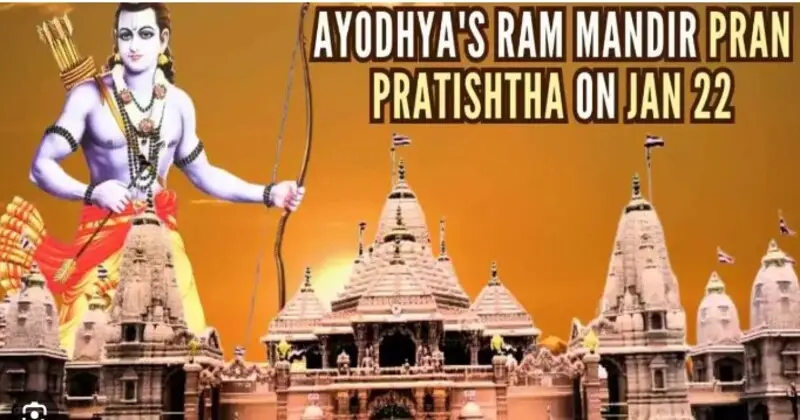What is Prana Prathista? This is what has been engaging the mind of Sree Ram Bhakts ever since the opening of Ayodhya Sree Ram Mandhir opening date was announced.
Sanatana Dharma advocates the worship / Realisation of the Nirguna Brahman of The Nirguna,Ultimate Reality beyond Names and Forms. However, Sanatan Dharma is aware it is difficult to focus upon principles alone to realise the Brahman.Though Brahman vis described as Beyond Qualities, three essential qualities are described. They are
- Sat,Being
- Chit, Conscious and
- Ananda,Bliss…
The Mind funds it easier to focus with qualities and if a form is added along with the qualities one likes ,it becomes easier still. The process of reflecting upon the Brahman, Reality is called Saguna Upasna. Under this comes the process of temple worship of Gods and Goddesses. One can worship personally. Vedas advocate individual,Personal Worship and not Collective Worship .This came later after the advent of Agamas,the procedure to build temples , installation and consecration of Idols of Devathas.
The process of installation of the Murthi in the temple is sacred and elaborate. The sculpted image remains a Sculpture and it becomes a Devatha after Prana,Life Force is injected into it by the Vedic mantras.
Prana means Life Force. Prathista means establishing. So Prana Prathista means Establishing the life force in the sculpture.
There are various steps in Prana Prathista,both in Sanatana Dharma and Jainism.
We shall see what prana Prathista in detail in the following articles.
‘The Sanskrit word pratiṣṭhā, which in general usage means “resting” or “position”, used in connection with a murti is translated by Apte as “the consecration of a vessel or dwelling”. The corresponding adjective pratiṣṭha means “installed” or “consecrated”.Prana means “life force, breath, spirit”. The phrase Prana Pratishtha is a ritual that means “establishment of the image in its vital breath” or “bringing life to the temple”.It is also referred to as Murti Sthapana (image placement inside the temple), or the composite word Pranapratishtha. Traditionally, this was the step when the eye of the murti was sculpted open, inside the garbhagriha (Purusha space of the temple) of a Hindu temple.
The ritual typically involves a Puja, chanting of Sanskrit mantras, as the deity is moved from outside into the center place. It includes inviting the deity as a resident guest of the temple, bathing and cleansing the deity, similar to welcoming a revered guest after a long journey. This is followed by dressing and seating the deity in a place of comfort, with the image’s face oriented towards the east (signifying the sunrise), followed by Nyasa ceremony with hymns (act of touching different parts of the murti, symbolizing the presence of various gods as sensory organs – Indra as the hand, Brahma as the heart, Surya as the eyes, etc.). The priest recites specific mantras and performs rituals to infuse the idol with prana. During this process, the deity descends into the idol, making it a living representation. After the infusion of prana, the deity is considered consecrated and blessed. Devotees often seek the deity’s blessings at this point. The ritual also includes the spraying of scented water and flowers, with the Chaksu͡unmilan ceremony (Sanskrit: “chakshu unmilan”, opening of the divine eye) marking the high point of the ritual.[6] The image is then considered as consecrated. In large and ceremonial public temples, the murti may be retired at sunset just like a guest retiring to bed, and then woken up at sunrise with pleasantries, washing, offering of fresh clothes, food and interaction with the devotees.[6][7][8] Some temples may include elaborate procession, as community events such as traditional singing and dancing events to mark the celebration.
A special type of consecration is used for festival icons (Sanskrit: utsava vigraha) for the purpose of parading the deity for the community to receive the vision (Sanskrit: darśaṇa) of the deity.
Reference.





Leave a comment